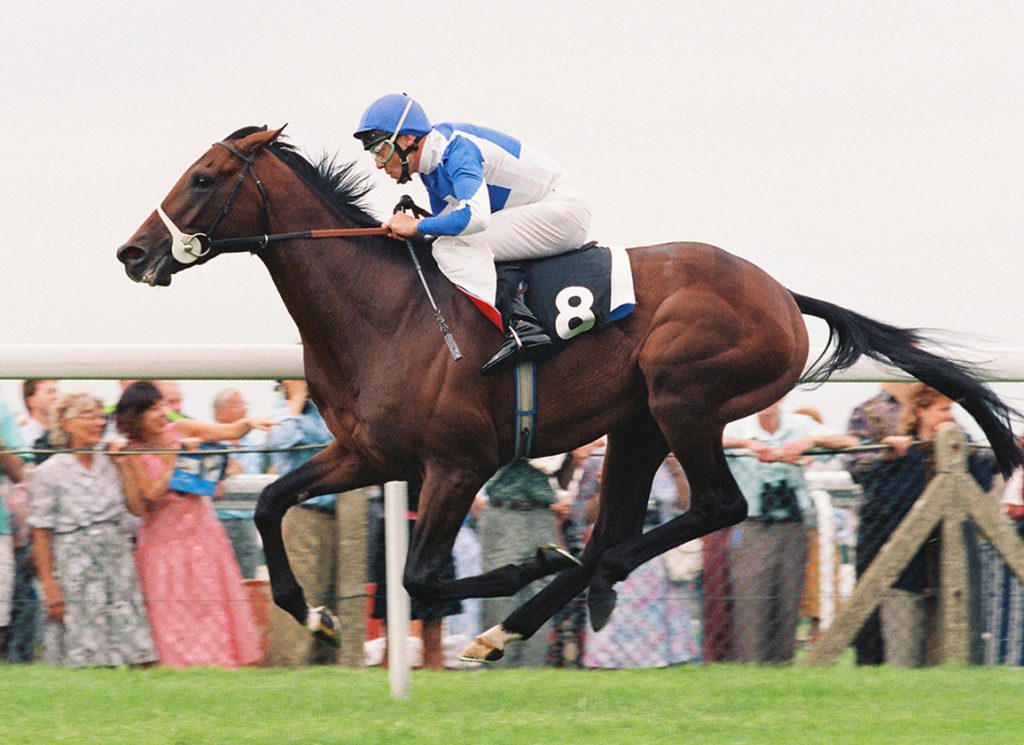It seems that every tick of the clock marks the demise of another friend and colleague in my life. Word came in today of the passing on January 15th of Dr. Billy (Merritt William) Marrs, who died in Indio, California, close to his winter home in Palm Springs. Such news usually travels fast in our circles, but this veterinarian has spent more of the last few years on out-of-town golf courses than on the backside or at a horse sale. Nevertheless, there will be a few tears and many fond tales told among Thoroughbred people of this colorful and loveable character.
Billy Marrs was a Lexington native, born in 1946, a graduate of the University of Kentucky who went on to a degree in Veterinary Medicine from Ohio State in 1973. His early mentors have already left for that great clinic in the sky, but anybody around Thoroughbreds in central Kentucky from the 1980s on will remember 'Doc' Marrs pulling up in his Cadillac, enveloped in a cloud of cigar smoke. One short car ride as his passenger and you got out smelling like Winston Churchill! He eschewed the Suburbans, the Tahoes and the SUVs and worked from either the trunk or the back seat of his gray DeVille. There was much competition for space in the car and it took forever to get the ancient X-ray camera from under the sets of golf clubs. Because he was an independent veterinarian and not connected to the two or three large veterinary groups in town, I frequently put Billy on veterinary arbitration disputes at Fasig-Tipton sales. He would always be very late or very early and invariably had to ask if he could borrow a scope from one of the other panel members.
Billy and I had close mutual friends in Jack G. Jones, Jr. of Mineola Farm in Lexington and California bloodstock guru Rollin Baugh. Jack was his lawyer, golfing companion and client. In the late 1970s Billy and Jack scouted the sales together for Buckram Oak Farm's owner Mahmoud Fustok. Jack remembers with certainty that at the Saratoga Yearling Sales, both Danzig and De La Rose were passed by Billy and made Fustok's short list, only to be underbidders on both in successive years. For a few years, Rollin was accompanied by Billy at Royal Ascot. He would call me the week before the famous English racing festival and the conversation would always jokingly open, “Well, Lord Collier, where should I be dining this year in London?” or “Can I wear brown suede shoes in the Royal Enclosure?”
Without delving too deeply into Dr. Marrs's private life, in Lexington, there seem to be no close family members surviving him in his hometown. He was married twice–once, for 13 years, to the very popular and bubbly Eloise, a leading light in local banking circles. Since October last year, he was engaged to the equally attractive Karen Nielsen, to whom I extend my sincere condolences.
Dr. Marrs got out of the veterinary world before it left him behind. He was old school. And he never let an equine appointment stand in the way of a round of golf. His many friends, of which I was honored to be one, will miss a man who did it his way.
Terence Collier
PS: There will be a celebration of life in Lexington in April and details will follow.
The post Letter to the Editor: Terence Collier Regarding the Passing of Dr. Billy Marrs appeared first on TDN | Thoroughbred Daily News | Horse Racing News, Results and Video | Thoroughbred Breeding and Auctions.

